Due to construction for our Rothko Pavilion expansion and renovation project, the permanent collection galleries are closed. A collection highlights exhibition will be on view beginning October 28, 2023.
American art
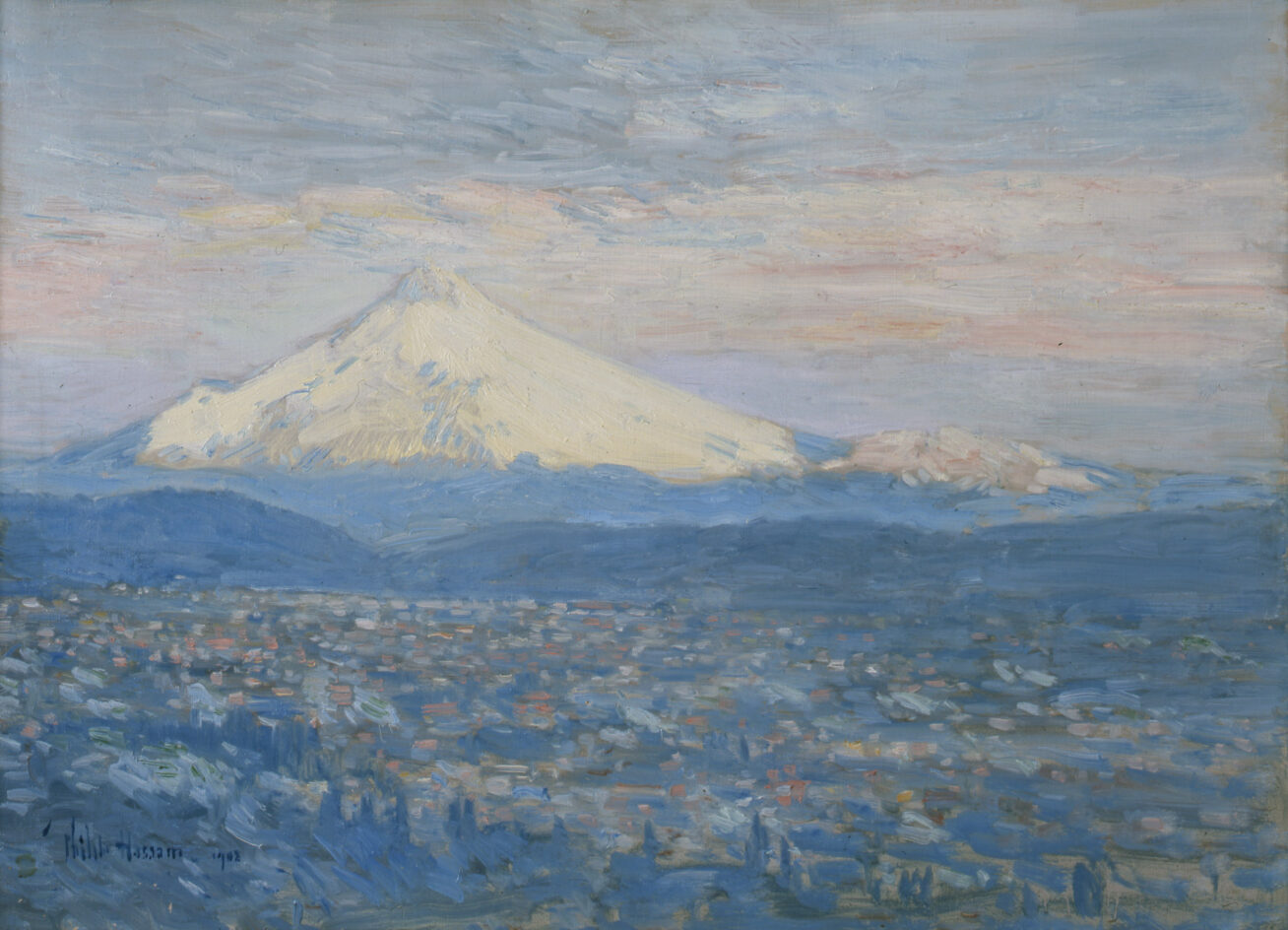
Since 1892, the Museum has amassed a significant collection of American paintings and sculptures. Located on the second level of the Main Building, the collection has grown primarily through gifts and key purchases of works by artists of national acclaim.
Arranged chronologically, the collection provides an overview of the history of American art. Early portraits by Gilbert Stuart and Erastus Salisbury Field join acknowledged late 19th–century masterworks such as the magnificent Mount Hood by Albert Bierstadt, The Sculptor and the King by George de Forest Brush, and Thomas Moran’s The Grand Canal, Venice. The collection also features paintings by the great 19th–century landscape painter, George Inness.
The collection is rich in works by American Impressionists Childe Hassam and J. Alden Weir, including paintings created during their visits to Portland in the early 1900s and Weir’s portrait of Museum founder C.E.S. Wood. Other works from the first half of the 20th century include paintings by artists ranging from Modernists Milton Avery and Marsden Hartley to John Sloan, George Luks, and other members of the Eight, a group of American artists that united to oppose academism.
Asian art
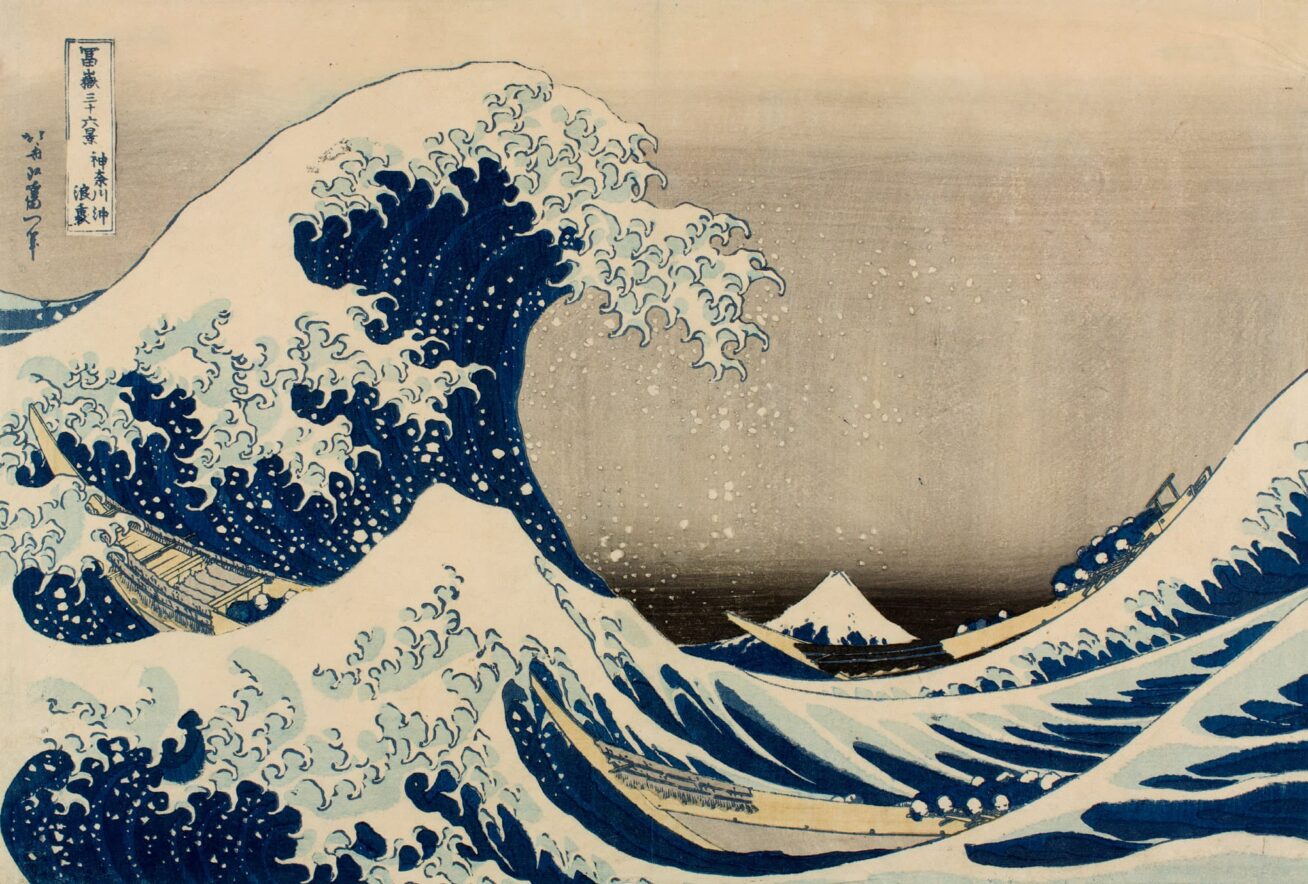
Curator
Jeannie Kenmotsu, PhD, The Arlene and Harold Schnitzer Curator of Asian Art
Portland has a long history of trade and cultural interchange with East Asia, and this engagement is reflected in the Portland Art Museum’s Asian art collection. The origins of the collection can be traced to work donated by some of the Museum’s founding trustees. The collection has grown steadily, especially in Chinese, Japanese, and Korean artworks, the majority of which have been gifts from Portland individuals and families. Exhibited on the main floor of the Main Building, the Asian art collection today totals nearly 4,000 objects.
Since 1932, when the Museum received the gift of the Mary Andrews Ladd collection of nearly 800 Japanese prints, the institution has been renowned for the depth and breadth of its holdings in this ever–popular medium. Subsequent gifts have expanded the Japanese print collection to more than 1,800 examples and broadened its range to include contemporary art. The Museum’s Japanese collection is also rich in painting and decorative arts of the Edo (1615–1868) and Meiji (1868–1912) periods.
The Chinese collection covers a much broader span of time, from the Neolithic to the modern periods, with strong representation in ceramics — primarily tomb objects — from the Han (206 BCE–220 CE) and Tang (618–907) dynasties. In the last few years, major gifts of Han and pre–Han objects from the Arlene and Harold Schnitzer Collection of Early Chinese Art have brought new prominence to the Museum’s holdings in this area. Few museums in the world can match in scale and quality the array of ceramic court nobles, dancers, and musicians — not to mention dogs, horses, and supernatural creatures — in the Museum’s Chinese collection. Other holdings in Chinese art include furnishings and decorative arts.
The Korean collection, though smaller in size than the Japanese or Chinese collections, also covers a relatively broad time span. The collection includes items dating from the 4th century to the present day, while providing an introduction to the major aesthetic and technical developments in Korean art from the 1st century CE to today. Highlights include a folding screen decorated with fanciful calligraphy (Munjado), representing the eight Confucian virtues; two portraits of 19th–century scholars; and furnishings typical of upper–class homes of the late Joseon dynasty (1392–1910).
A small but significant group of Islamic and Indian paintings and South Asian Buddhist art add geographical breadth to the Asian holdings.
In 1997, the Museum converted the first floor of the Hirsch Wing (built in 1938) into a suite of four galleries, specifically designed to showcase objects from the Asian collection. This effectively doubled the amount of space devoted to Asian art and made it possible — for the first time in the Museum’s history — to dedicate separate galleries to the arts of China, Japan, and Korea. The Museum has since added two more galleries to this suite to showcase Chinese art.
European art
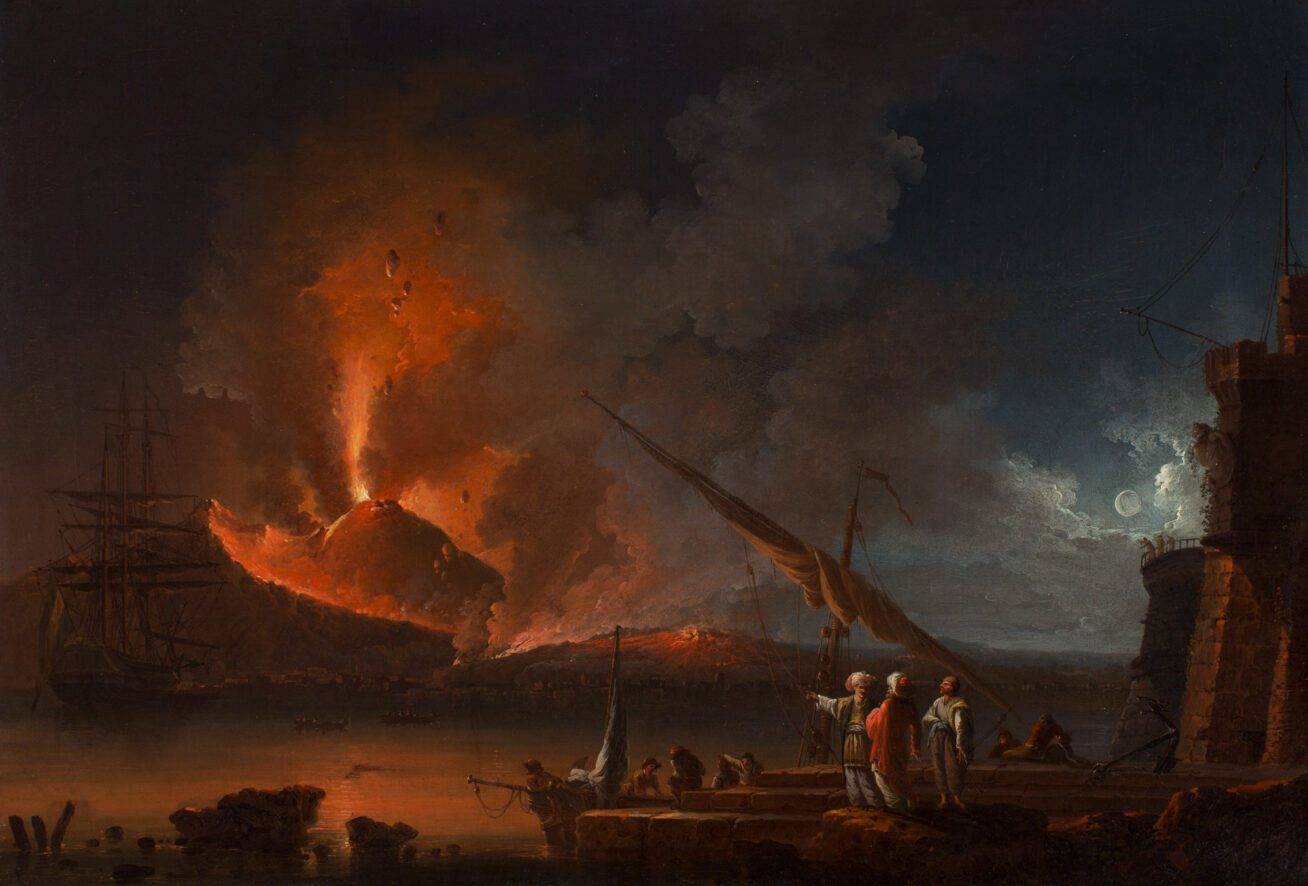
Since the Museum’s founding in 1892, European art has been at the core of the permanent collection. Museum founder Henry Corbett gave $10,000, which helped purchase the first acquisitions to the permanent and European collections: 100 plaster casts of Greek and Roman sculptures. The sculptures were chosen by Museum founder Winslow B. Ayer, who spent several months selecting works for the Museum from galleries and museums in Europe. In 1895, the Corbett Collection, as the casts were known, was installed. An instant success, the collection was considered Portland’s most important and popular cultural resource.
Today, the collection occupies a sequence of galleries on the Main Building’s second floor allowing visitors to follow the works from the 17th century back to Classical Antiquity or forward to the 19th century. A gallery of classical antiquities displays a selection of Greek, Roman, and Etruscan objects, including red- and black-figure vases, small bronzes, and glass drawn from the Sally Lewis Collection donated to the Museum in 1926.
Several important paintings were acquired in the early decades of the 20th century, but it was through two significant bequests, the 1935 Winslow B. Ayer bequest and the 1943 C.F. Adams bequest, that the Museum acquired the French 18th-century Impressionist paintings at the core of the European collection.
In 1961, the collection expanded to include the Renaissance and Baroque paintings and sculptures, gifted by the Samuel H. Kress Foundation, that anchor the representation of the stylistic evolution of European painting from the 14th through 19th centuries.
Gifts from generous supporters and select acquisitions continue to expand the scope and quality of the collection. Major additions of Baroque art include Portrait of Cardinal Domenico Rivarola by Anthony Van Dyck, Volumnia Before Coriolanus by Rembrandt’s student and friend, Gerbrand van den Eeckhout, and Spirit of the Dance by Jean-Baptiste Carpeaux. The French holdings from the collection’s beginning have been supplemented by recent purchases of French 17th–century masters, including paintings by Philippe de Champaigne, Michel Corneille, Jacques Stella, Jean-François de Troy, Jean-Baptiste Greuze, Jean-Honoré Fragonard, Gustave Courbet, and Camille Corot.
Graphic arts
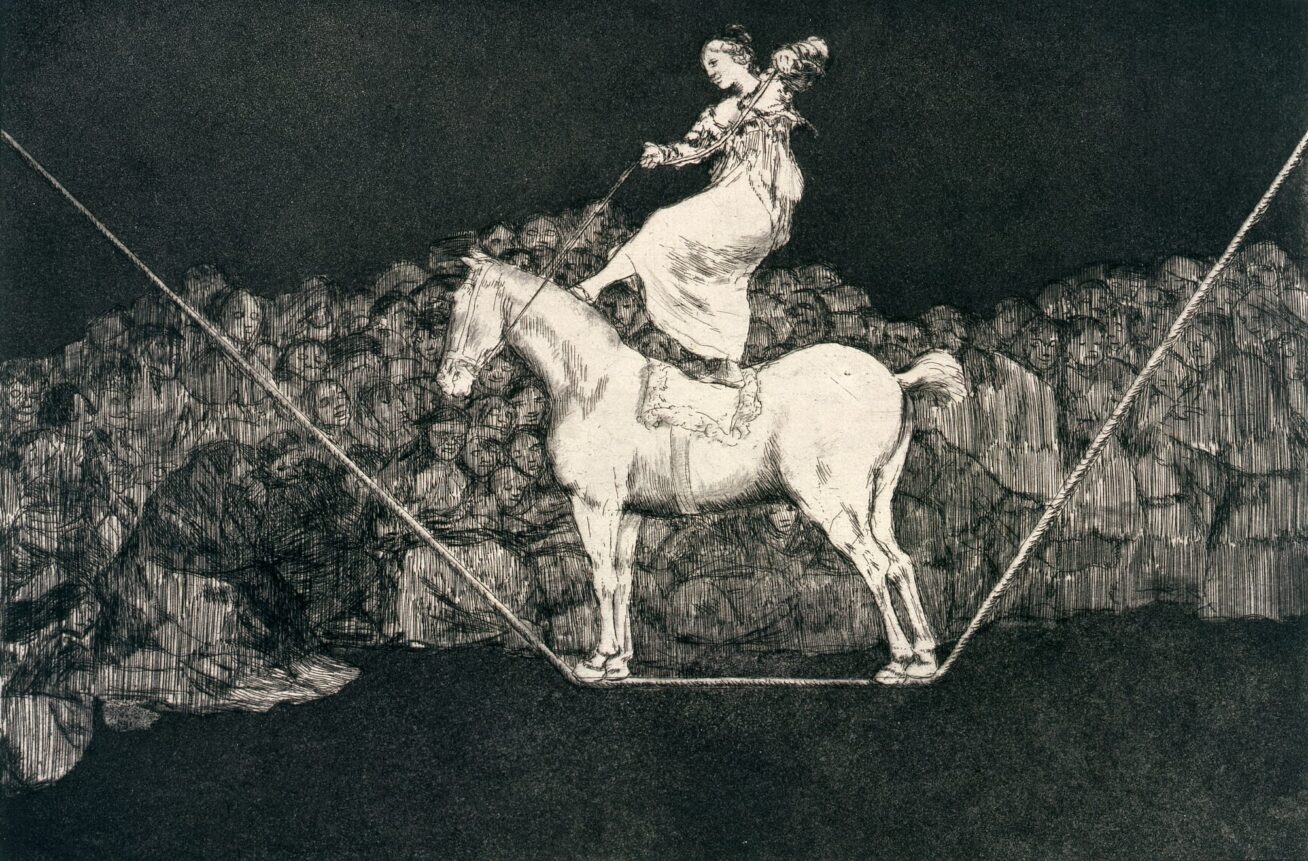
Curator
Mary Weaver Chapin, Ph.D., Curator of Prints and Drawings
The graphic arts have been integral to the holdings of the Museum since its inception. In fact, they constitute the largest part of the collection, with more than 25,000 drawings, prints, posters, and artists’ books spanning more than five hundred years.The majority of the collection has been built from gifts from our community, including a significant donation from Gordon Gilkey, a printmaker, educator, and curator at the Museum from 1977 to 2000. Strategic purchases have enhanced and expanded the holdings over the years.
This collection features many prominent European and American artists from the Renaissance to the present day. Works by Giovanni Battista Piranesi, Francisco de Goya, Honoré Daumier, and Kathe Kollwitz are represented in depth. The holdings of sixteenth-century and seventh-century art, though not extensive, contains outstanding individual examples by artists including Albrecht Durer and Rembrandt van Rijn. In addition, the Museum boasts a fine collection of nineteenth-century French prints, German Expressionist prints, American World War I posters, screenprints by Corita Kent, modern Mexican works on paper, and a comprehensive body of work by artists who have lived and worked in the Northwest. The Adams Foundation Foyer and Helen Copeland Gallery feature changing exhibitions that highlight graphic arts from the collection.
Modern and contemporary art
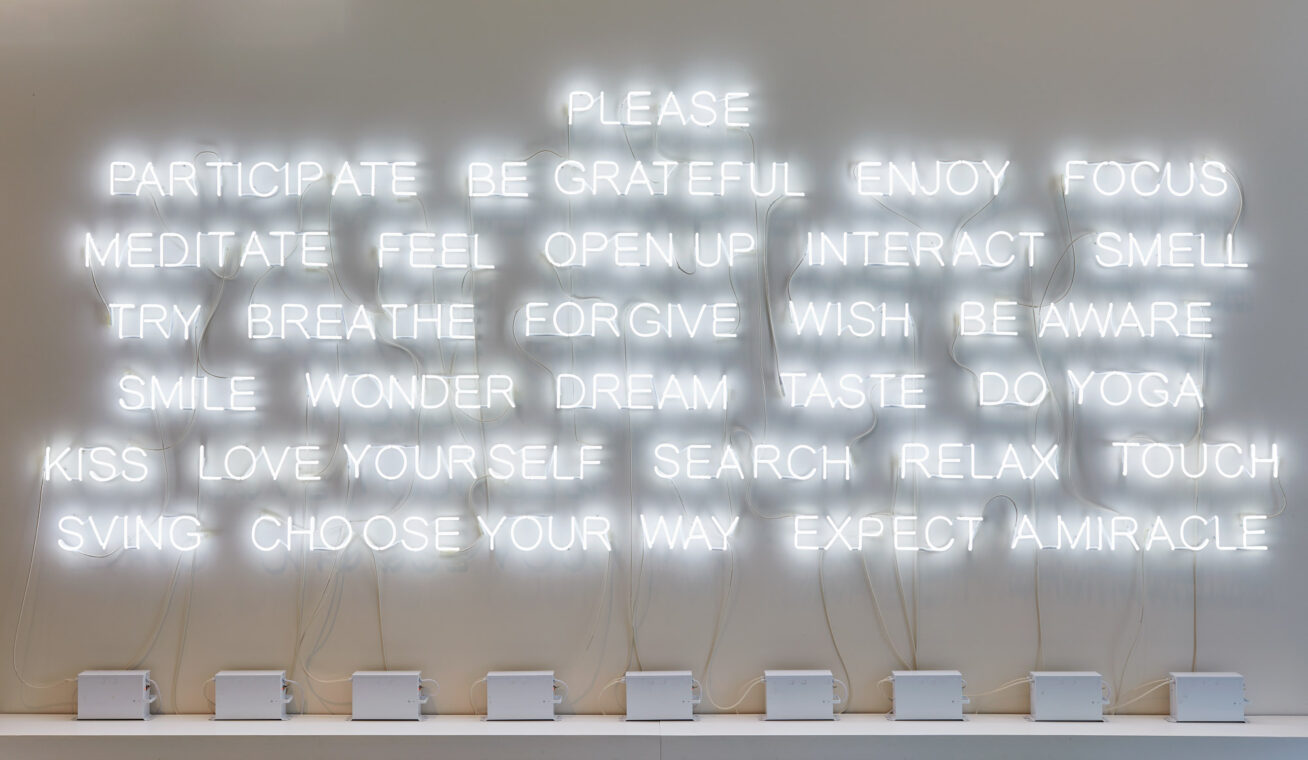
Curator
Sara Krajewski, The Robert and Mercedes Eichholz Senior Curator of Modern and Contemporary Art
The Museum has placed living artists at the core of its mission since its founding. Groundbreaking modern art first came to Portland through a traveling exhibition in 1905. In 1913, PAM hosted selections from the infamous New York Armory Show, which erupted in controversy over Marcel Duchamp’s Nude Descending a Staircase that combined cubism, futurism and dada.
As the city grew in the twentieth century, the museum’s collection also grew significantly through donations and purchases of art works by artists of the day. American sculpture is an important part of the collection. Established in the 1940s, The Evan H. Roberts Memorial Sculpture Fund enabled PAM to purchase important works by Alexander Calder, Isamu Noguchi, Richard Serra and several other figures working in the mid-twentieth century. As a complement, the Museum acquired many paintings from the personal collection of Clement Greenberg in 2001. Greenberg was a critical writer in the 1940s -1960s who championed abstract art and his collection includes the work of Helen Frankenthaler, Jules Olitski, Kenneth Noland, Anne Truitt and many others.
Twenty-first century art is also found throughout the galleries of the Jubitz Center for Modern and Contemporary Art. Visitor favorites include Please Participate by Jeppe Hein and the bronze bust of Likunt Daniel Ailin by Kehinde Wiley. The Museum has also added video and new media works to its collection, notably Do I Look Like a Lady (Actors and Comedians) by Mickalene Thomas and Power Plants by Hito Steyerl.
Housed in the Jubitz Center, the contemporary art programming of the Museum hosts rotating exhibitions from the collection and special exhibitions, programs and performances that explore the ways artists innovate with materials and expressions as they tackle the meaningful issues of our time.
Native American art
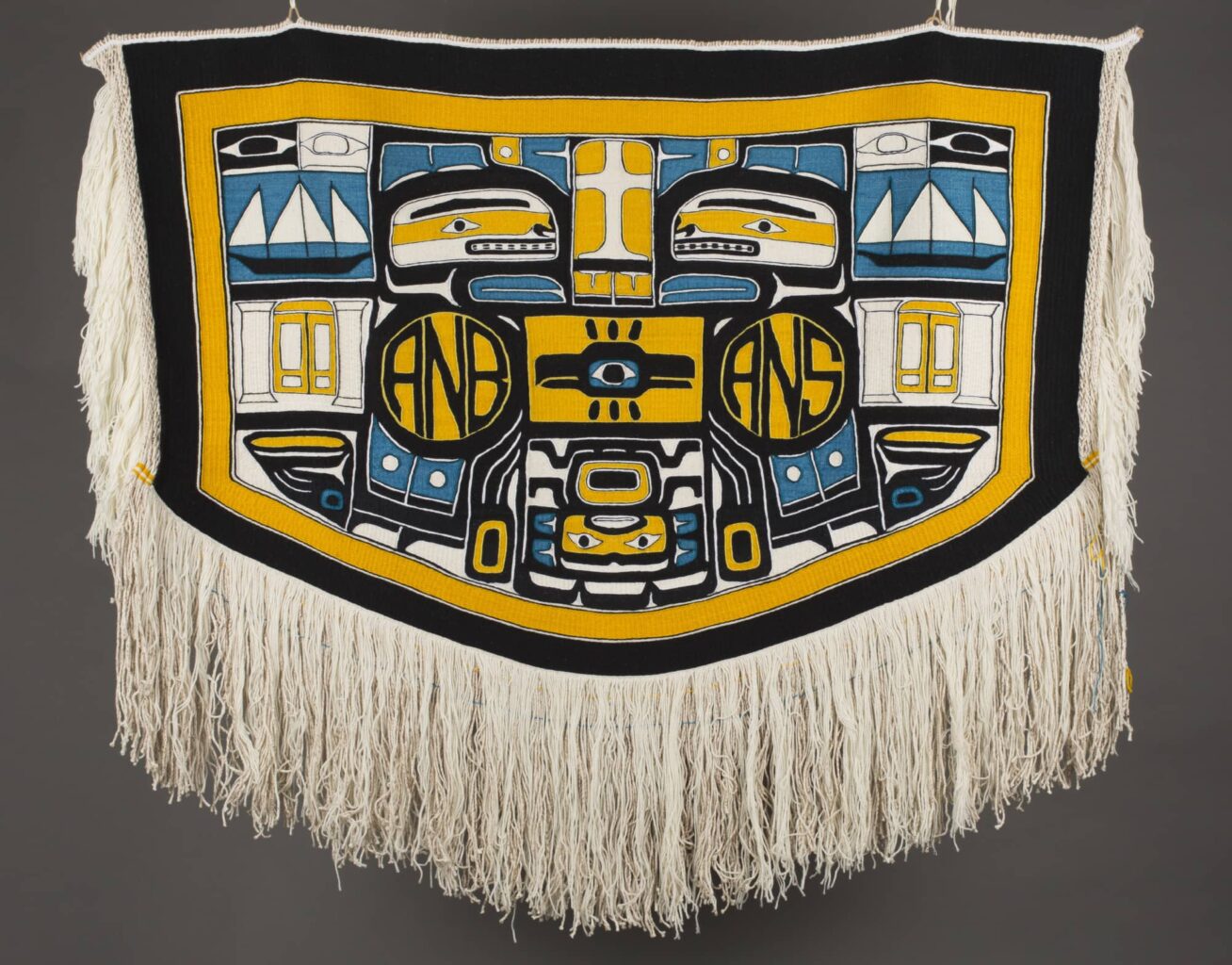
Curator
Kathleen Ash-Milby, Curator of Native American art
Erin Grant, Assistant Curator of Native American art
The Museum’s collection of Native American art is housed in the Confederated Tribes of Grand Ronde Center for Native American Art. The collection, remarkable for both its depth and diversity, consists of over 3,400 ancient, historic and contemporary objects created by some 200 cultural groups from throughout the Americas. Included are outstanding works by Native American masters such as Allan Houser, Charles Edenshaw, Maria Martinez, and Virgil Ortiz in addition to regional contemporary artists such as Lillian Pitt, Joe Feddersen, Rick Bartow, and James Lavadour. Portland is home to several nationally and internationally recognized in the collection including Marie Watt, Brenda Mallory and Wendy Red Star.
The Center is located on the second and third floors of the Hoffman Wing in the Museum’s Main Building; each gallery has been organized by cultural region since 2000. The second-floor galleries focus on the Museum’s world-renowned collection of Northwest Coast art as well as galleries dedicated to the Arctic, Plains, Woodlands, Southwest, and California regions. Two additional galleries featuring work from our own region, western Oregon and the Columbia Plateau, are located on the third floor. The Native American collections will be undergoing a major reorganization and reinstallation following the construction of the Rothko Pavilion.
The majority of the Museum’s collection of Native American art comes from two sources. In 1948, the Museum purchased Axel Rasmussen’s collection of Northwest Coast art, and in 1986, Elizabeth Cole Butler began donating her encyclopedic collection of Native American art of North America. The Center is named in honor of the Confederated Tribes of Grand Ronde and the Spirit Mountain Community Fund and is dedicated to all the Native American tribes of Oregon.
Northwest art
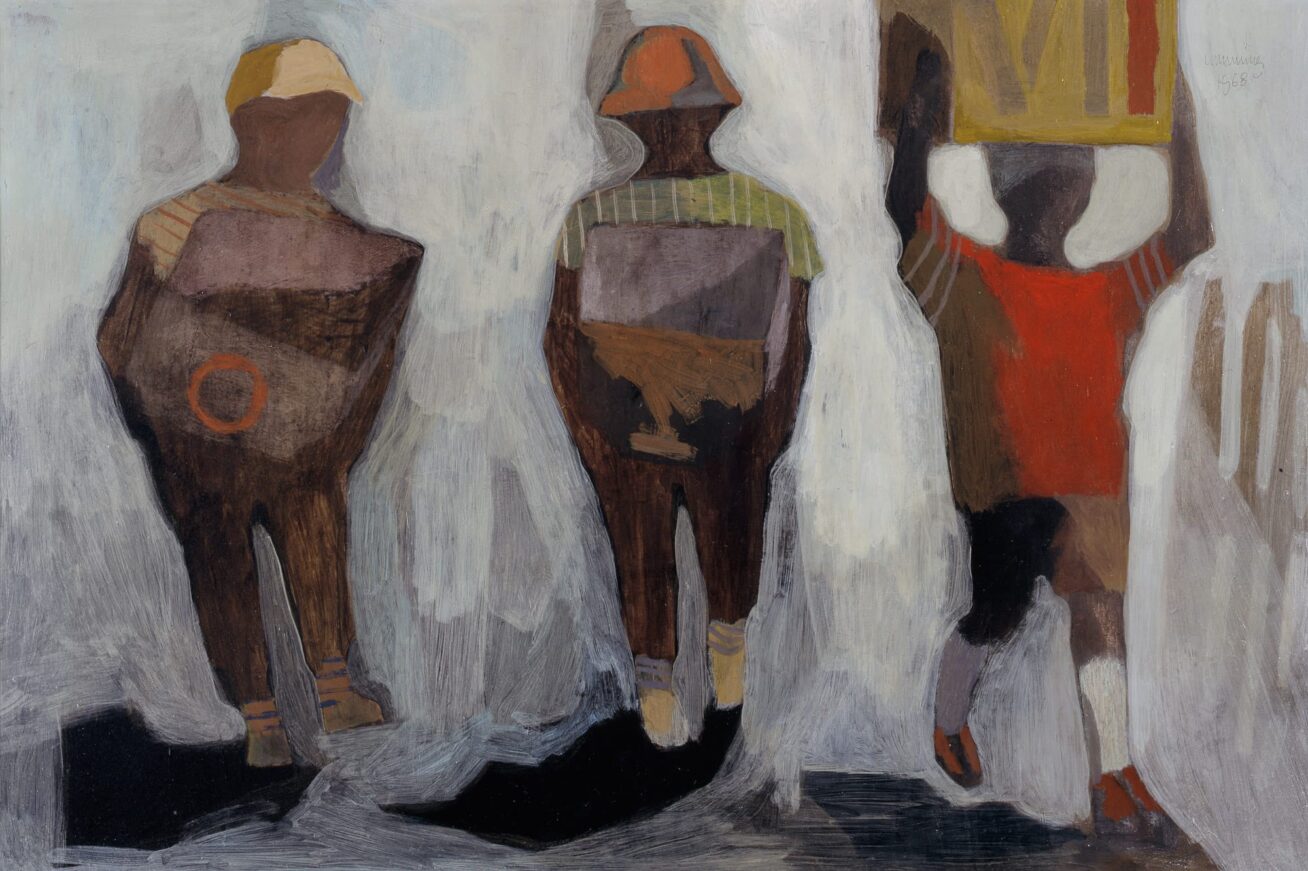
Curator
Grace Kook-Anderson, The Arlene and Harold Schnitzer Curator of Northwest Art
The Arlene and Harold Schnitzer Center for Northwest Art brings the Museum’s regional holdings to the forefront. The center presents work from the permanent collection and loan exhibitions that celebrate Northwest history and culture from the late nineteenth century to today.
This collection distinguishes the Museum from other cultural institutions in the region, with work by past and present artists living and working in Oregon, Alaska, Idaho, Montana, Vancouver, Washington, and Wyoming. It offers a visual narrative of the Northwest while providing insight into the work of artists including Carl Morris, Morris Graves, Mark Tobey, C. S. Price, and Jacob Lawrence.
The dynamic APEX exhibition series highlights emerging and established Northwest artists working in a range of mediums, from painting, drawing, sculpture, and photography, to video, installation, and sound. The Rubinstein Alcove features changing historic dossier presentations by notable regional artists, such as James Castle, Charles Heaney, Clifford Gleason, and Melville T. Wire.
Photography
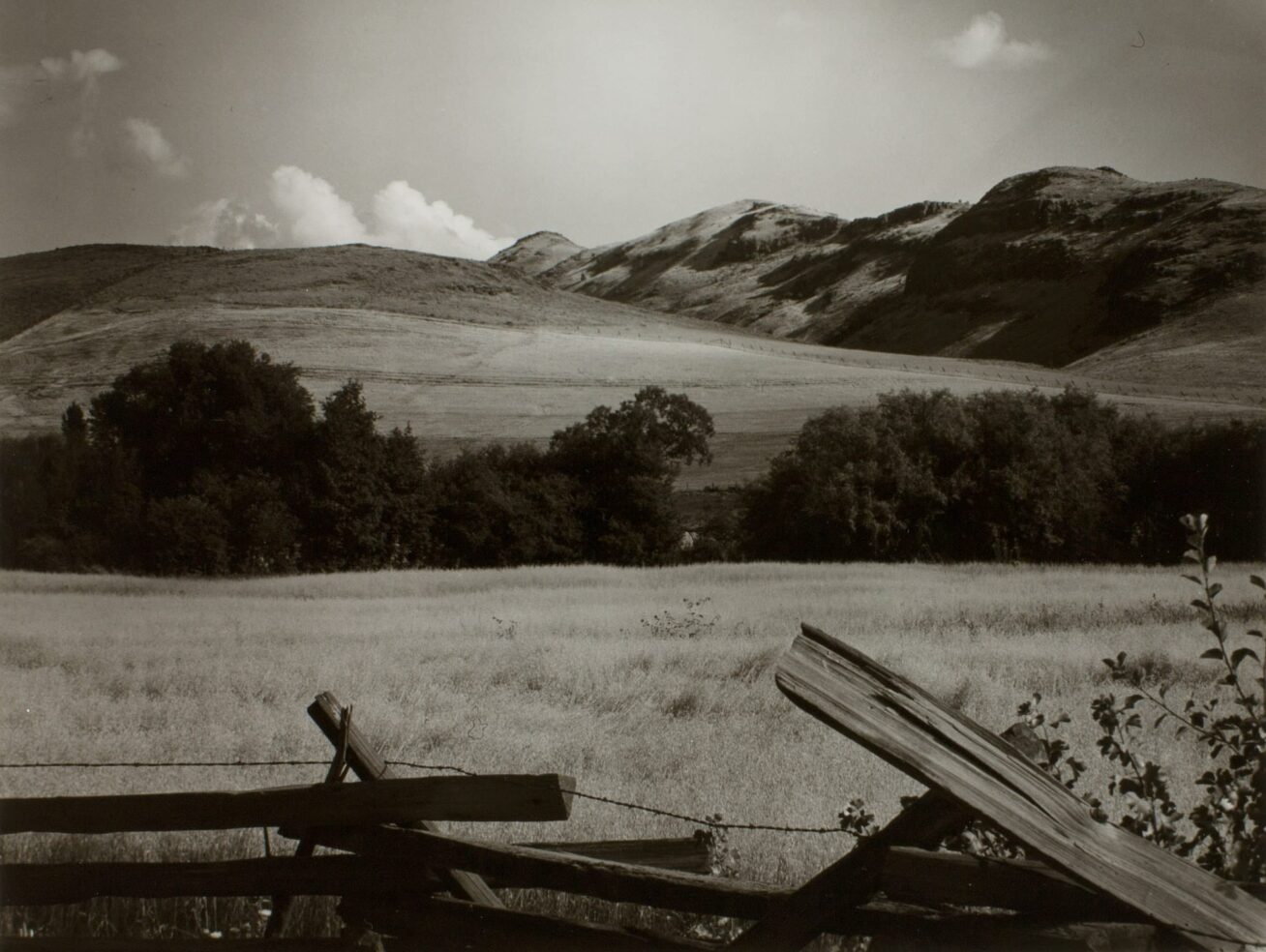
Curator
Julia Dolan, Ph.D., The Minor White Senior Curator of Photography
The Museum’s commitment to photography extends back to 1905, when the Portland Society of Photographic Art initiated a regular program of exhibitions within the Museum’s galleries. Today, a dedicated space in the Jubitz Center for Modern and Contemporary Art ensures that photography is on view consistently.
The collection numbers over ten thousand photographs, and while wide-ranging, is particularly strong in post-1945 American photography. Highlights include Minor White’s Works Progress Administration pictures of Portland and its environs, which formed the basis for PAM’s fine art photography collection; a complete set of Edward Curtis’s major publication The North American Indian; and significant holdings of work by Robert Adams, Jonathan Brand, Bruce Davidson, Ingeborg Gerdes, Victor Jorgensen, Ray Metzker, Bea Nettles, Věra Prášilova Scott, Aaron Siskind, and Myra Albert Wiggins.Unique aspects include more than five hundred images by Soviet-era Russian photographers, and the Blue Sky Collection, featuring selections from the more than 750 shows at Portland’s renowned Blue Sky Gallery. The collection also includes work by noted contemporary artists, among them Sara Cwynar, Binh Danh, Richard Mosse, Vik Muniz, Cindy Sherman, Lorna Simpson, and Carrie Mae Weems.
Silver
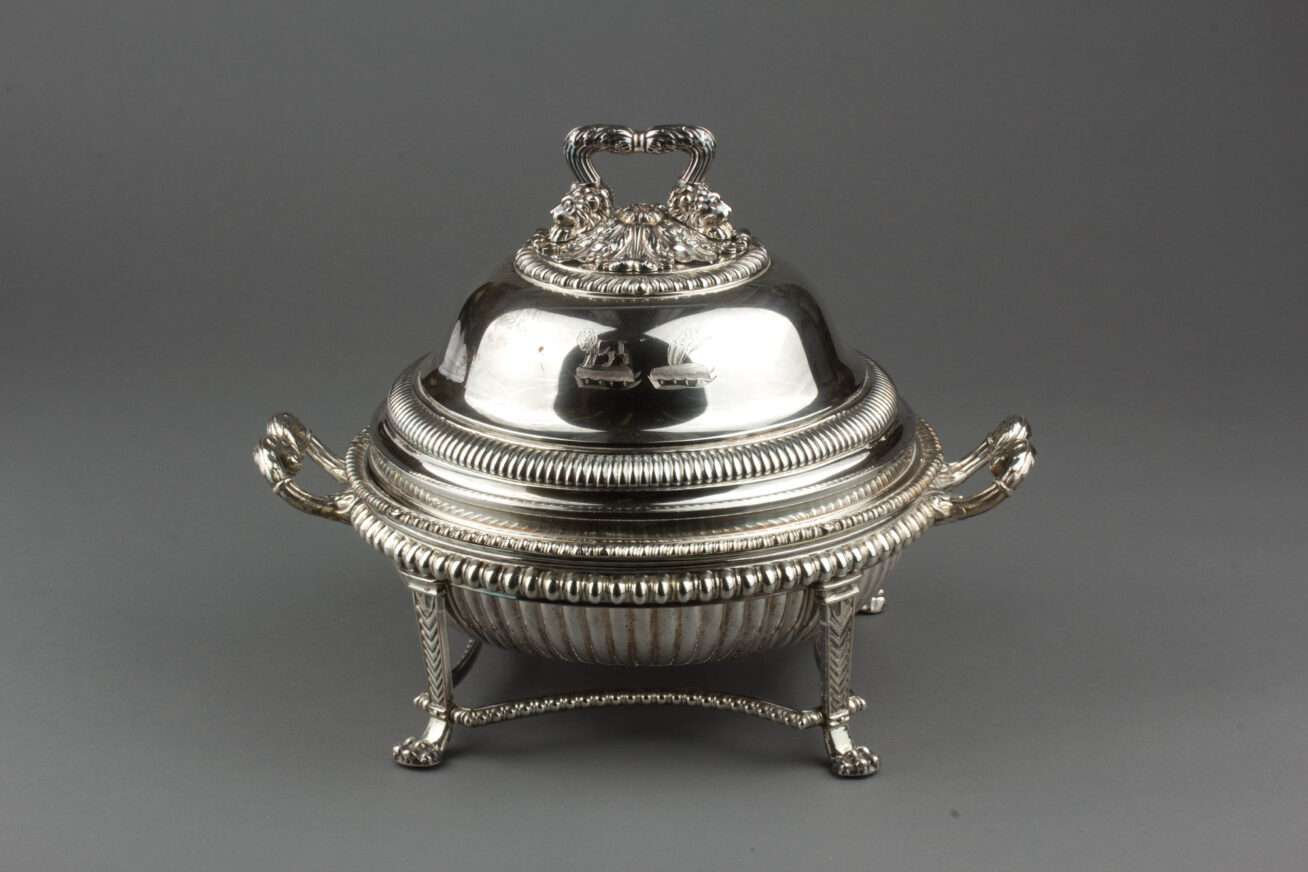
The Portland Art Museum’s silver collection is the result of the generosity of Portland community members. William H. Nunn and his wife Alice gave their private silver collection to the Museum and, in 1955, established a fund to support ongoing acquisitions. Henry Failing Cabell’s 1972 bequest added considerable depth to the collection, with rare treasures such as an Elizabethan silver-gilt bell salt. In 1982, Anna Wheeler Hayes gave the Museum her collection of the intriguing sauce vessels known as “argylls.” Updating the impressive historical collection are the more recent gifts of Margo Grant Walsh, whose extensive collection focused on the Arts and Crafts movement.
For many years, the Museum’s extraordinary collection of silver art was a “buried treasure,” ironically known better by scholars in the field than by many residents of Portland. The Museum’s new gallery allows for the display of more than 100 pieces from this collection, which ranges from a 15th-century drinking bowl to a mid-Victorian silver tea service. The collection also includes a spectacular Rococo cup and cover with maker’s marks of Lewis Herne and Francis Butty, and a fascinating neoclassical centerpiece marked by John Scofield.
The installation of the Museum’s Silver gallery has been generously supported by Max R. and Suzanne M. Millis and the Henry Luce Foundation.
Join an art council
Joining an art council is the best way to explore a favorite genre, region, or period of art. As a council member, you’ll learn directly from curators, go behind the scenes of the collection, and connect with other Museum supporters who share your interests.